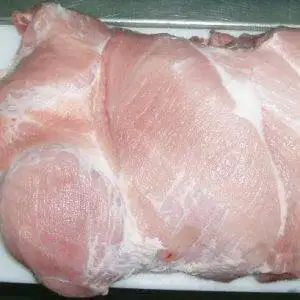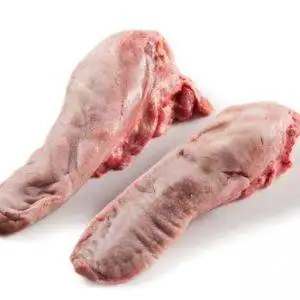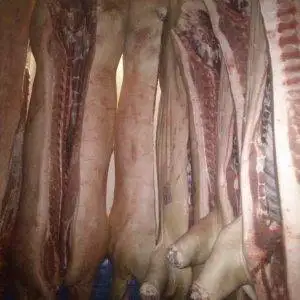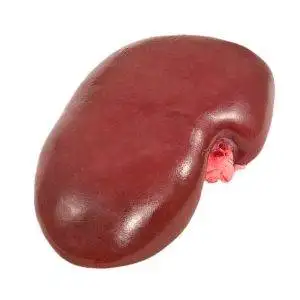Description
Frozen Pork Leg Skinless: A Complete Guide to Quality, Nutrition, and Usage
Introduction
In the global meat industry, https://copacolc.com/frozen pork leg skinless is one of the most sought-after cuts due to its versatility, nutritional value, and widespread culinary applications. Whether you are a distributor, retailer, or end consumer, understanding the benefits, uses, and trade aspects of this product is essential. From international export markets to local kitchens, pork leg—when carefully trimmed and frozen—provides a lean, high-protein option that appeals to diverse tastes and cultures.
This guide dives deep into everything you need to know about frozen pork leg skinless, including its characteristics, nutritional profile, storage practices, global trade relevance, and cooking potential.
What Is Frozen Pork Leg Skinless?
Frozen pork leg skinless refers to the hind leg portion of a pig that has been deboned or semi-boned, with the skin removed, and then frozen to preserve its freshness. Unlike other pork cuts that may retain skin or higher fat content, this cut is leaner and more adaptable to both traditional and modern cuisines.
Key features include:
-
Lean texture: Lower fat content compared to skin-on cuts.
-
Large size: Suitable for processing into smaller cuts like ham, steaks, or cubes.
-
Versatility: Can be used in roasting, curing, braising, and further processing.
-
Frozen preservation: Extends shelf life, facilitates export, and ensures year-round availability.
Why Choose Skinless Pork Leg?
The removal of skin from pork leg provides both nutritional and culinary advantages:
-
Reduced fat content – Without the skin, the pork leg becomes leaner, appealing to health-conscious consumers.
-
Better marination absorption – Skinless pork allows spices and marinades to penetrate deeper, enhancing flavor.
-
Adaptability – Easier to portion, cube, or slice for different recipes.
-
Preferred in global markets – Many importing countries specifically demand skinless cuts due to dietary preferences or regulations.
Nutritional Value of Frozen Pork Leg Skinless
Frozen pork leg skinless is a powerhouse of essential nutrients. It is especially valued for being high in protein while lower in fat compared to other pork parts.
Nutritional Breakdown (per 100g of raw pork leg, skinless):
-
Calories: ~150 kcal
-
Protein: 21–23 g
-
Fat: 5–7 g
-
Carbohydrates: 0 g
-
Iron: 1.2–1.5 mg
-
Zinc: 2.5–3 mg
-
Vitamin B1 (Thiamine): 0.7 mg
-
Vitamin B6: 0.5 mg
-
Phosphorus: 200 mg
Health Benefits
-
Muscle growth & repair: High-quality protein supports muscle maintenance.
-
Energy metabolism: Rich in B vitamins, particularly thiamine and B6.
-
Immune function: Contains zinc and iron, important for immunity and oxygen transport.
-
Heart health: Lower fat content compared to skin-on cuts makes it a leaner option.
Processing and Freezing Methods
To ensure quality and food safety, pork leg undergoes specific processing steps before reaching global markets.
-
Slaughter & Inspection – Only animals from approved farms and facilities are processed.
-
Deboning & Skin Removal – Skin is carefully removed to reduce fat content.
-
Portioning – The leg is cut into export-friendly sizes or left whole.
-
Quick Freezing – Blast freezing at -35°C to -40°C helps lock in nutrients, color, and flavor.
-
Storage – Maintained at -18°C or lower to ensure long shelf life.
This process guarantees that consumers receive fresh-tasting, safe, and high-quality pork leg no matter where they are located.
Storage and Handling Guidelines
Proper storage is crucial for maintaining the quality of frozen pork leg skinless.
-
Temperature control: Always store at -18°C or colder.
-
Avoid thaw-refreeze cycles: Repeated thawing affects texture and safety.
-
Packaging: Vacuum-sealed or polybag-wrapped to prevent freezer burn.
-
Shelf life: Up to 12 months under proper frozen storage.
-
Thawing methods: Thaw in the refrigerator (0–4°C) or under cold running water for best results.
Global Trade of Frozen Pork Leg Skinless
The demand for pork leg—especially skinless varieties—is significant in global markets, particularly in Asia, Europe, and Africa.
Leading Exporters
-
European Union (Spain, Germany, Denmark, Netherlands)
-
Brazil
-
United States
-
Canada
Major Importing Regions
-
China & Hong Kong – Massive demand for pork products due to local consumption.
-
Vietnam & Philippines – Growing demand for processed pork leg cuts.
-
African nations – Import frozen pork for affordability and availability.
-
Eastern Europe – Large consumers of pork-based sausages and cured meats.
Why It Matters in Trade
-
Affordability: Pork leg is cheaper compared to premium cuts.
-
Culinary adaptability: Fits both industrial food processing and household use.
-
Export stability: Frozen format allows long-distance shipping.
Culinary Uses of Frozen Pork Leg Skinless
Frozen pork leg skinless is highly versatile in both home cooking and industrial food production.
Common Culinary Applications
-
Roasting – Perfect for Sunday roasts or festive meals.
-
Curing & Smoking – Ideal for ham, prosciutto, or deli slices.
-
Stews & Braises – The lean meat absorbs flavors beautifully.
-
Grinding & Processing – Used in sausages, patties, and meatballs.
-
Stir-Frying & Quick Cooking – Sliced thinly for Asian-style dishes.
Popular Dishes Around the World
-
Spain – Jamón curado (dry-cured ham).
-
Germany – Smoked pork leg served with sauerkraut.
-
Philippines – Adobo or paksiw na pata (stewed pork leg).
-
China – Red-braised pork leg without skin for festive dishes.
-
Africa – Stews combining pork leg with root vegetables.
Frozen Pork Leg Skinless in the Food Industry
Beyond households, frozen pork leg skinless is crucial for the meat processing sector.
-
Ham manufacturing
-
Sausage and luncheon meat production
-
Canned pork products
-
Ready-to-eat meals
-
Foodservice industry (hotels, restaurants, catering)
Because of its balance of leanness and yield, it is often preferred by processors compared to fatty cuts.
Quality Standards and Certifications
To ensure safety and consistency, exporters and importers of frozen pork leg skinless adhere to international food safety standards.
-
HACCP (Hazard Analysis Critical Control Point)
-
ISO 22000 Certification
-
Halal Certification (for Muslim-majority countries)
-
EU Approved Establishments
-
USDA & CFIA Compliance
These certifications build trust and open access to international markets.
Consumer Buying Guide
When buying frozen pork leg skinless, here are some tips:
-
Check packaging integrity – No tears or ice crystals.
-
Look for clear labeling – Country of origin, production date, and certifications.
-
Avoid discolored meat – Should be pinkish-red, not brown or gray.
-
Buy from reputable suppliers – Especially when purchasing in bulk.
-
Match portion size to use – Whole legs for processing, smaller cuts for cooking.
Market Trends and Future Outlook
The frozen pork industry continues to expand due to changing consumer behavior and food industry dynamics.
-
Rising demand in Asia: Driven by urbanization and growing middle-class consumption.
-
Health-conscious shift: Preference for leaner cuts like skinless pork leg.
-
E-commerce growth: Frozen meat increasingly sold via online platforms.
-
Sustainability focus: Exporters adopting eco-friendly packaging and supply chains.
Analysts predict steady growth in demand for , especially in markets where affordability, availability, and versatility are key factors.
Conclusion
Frozen pork leg skinless is more than just a meat product—it’s a staple of international trade, a nutritious option for consumers, and a vital ingredient for countless recipes and food industries worldwide. With its lean texture, long shelf life, and diverse culinary applications, it stands out as one of the most valuable pork cuts in both domestic and international markets.
Whether you are a wholesaler, a retailer, or a home cook, https://en.wikipedia.org/wiki/Meat_chopfrozen pork leg skinless delivers quality, nutrition, and versatility that makes it an indispensable choice in today’s food landscape.






Reviews
There are no reviews yet.